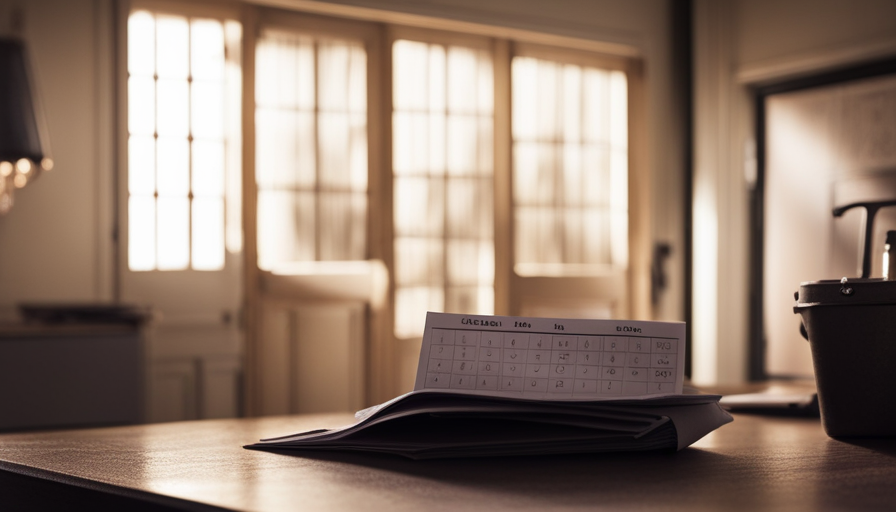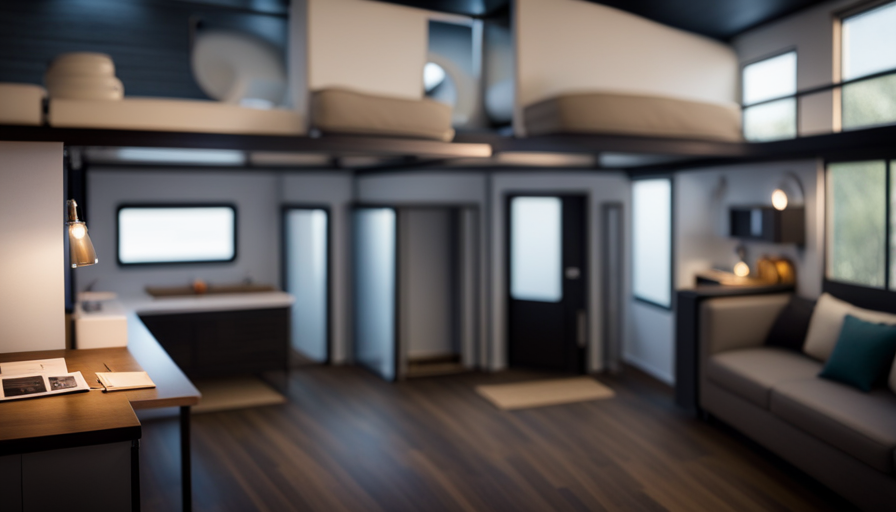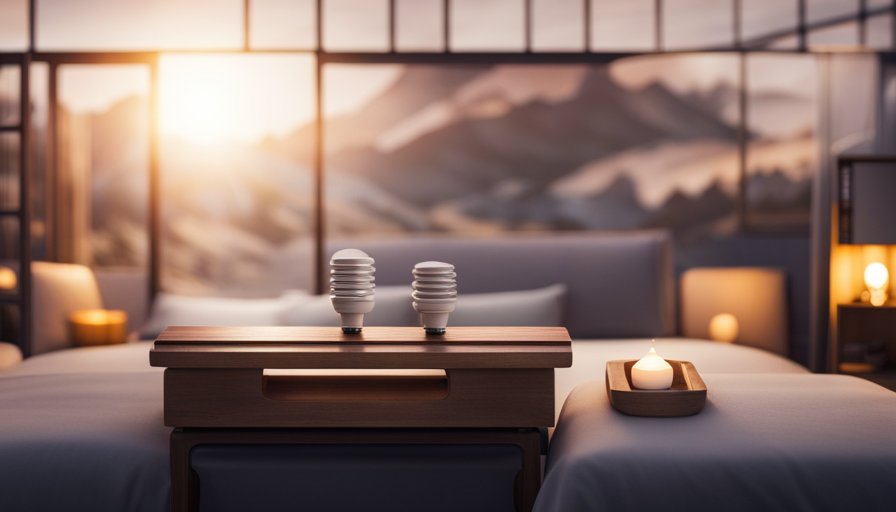Among the many options for housing, tiny homes stand out as special defenders of simplicity and efficiency. These small homes, with their cleverly designed spaces and minimalistic aesthetics, have captured the hearts of a growing number of individuals seeking a more sustainable and affordable lifestyle.
But amidst the allure of downsizing and embracing a minimalist lifestyle, one question looms large: how long do people actually live in their tiny houses?
To answer this query, we must venture beyond the realm of speculation and delve into the world of data and analysis. By examining the factors that influence the duration of stay in a tiny house, such as lifestyle choices, community support systems, and legal considerations, we can paint a more accurate picture of the realities faced by tiny house dwellers.
Additionally, exploring the stories of those who have already embarked on this unique living journey can provide valuable insights into the challenges and rewards that come with living in a tiny house.
Join me on this analytical exploration as we uncover the secrets behind the longevity of tiny house living and discover how individuals navigate the complexities of maintaining a sustainable and fulfilling lifestyle within the confines of these small yet mighty abodes.
Key Takeaways
- Factors influencing the duration of stay in tiny houses include lifestyle choices, community support systems, and legal considerations.
- Personal preferences such as design, location, sustainability, minimalism, and financial freedom can impact the duration of stay.
- Life circumstances like financial constraints and changes in family size or job location can influence the decision to live in a tiny house.
- Benefits of tiny house living include saving money, reducing environmental impact, and pursuing future plans and goals.
Benefits of Tiny House Living
Living in a tiny house brings countless benefits, from saving money to reducing environmental impact. One of the main advantages of downsizing to a tiny house is the financial sustainability it offers. With lower costs for construction, maintenance, and utilities, tiny house living can significantly decrease expenses. Many tiny house dwellers find themselves with more disposable income and the ability to save for the future.
Additionally, the reduced square footage encourages a simplified lifestyle, which can lead to less spending on unnecessary items and a greater focus on experiences and personal growth.
Furthermore, living in a tiny house promotes environmental sustainability. The smaller size means less energy is required for heating and cooling, resulting in lower energy bills and reduced carbon emissions. Tiny houses also often incorporate eco-friendly features such as solar panels, rainwater harvesting systems, and composting toilets, further minimizing their environmental impact. By embracing a minimalist lifestyle and consuming fewer resources, tiny house dwellers contribute to a more sustainable future.
Considering the benefits of downsizing and financial sustainability, it is no wonder that many people are drawn to the idea of living in a tiny house. However, there are several factors influencing the duration of stay in these compact dwellings.
Factors Influencing Duration of Stay
When it comes to determining how long I will live in a tiny house, there are several factors that can influence the duration of my stay.
Personal preferences play a significant role in this decision, as some individuals may find the minimalist lifestyle of a tiny house appealing for a longer period of time than others.
Additionally, life circumstances such as changes in family size or job location can also impact how long I choose to stay in a tiny house.
Lastly, future plans and goals can play a role in determining the duration of my stay, as I may have specific milestones or aspirations that require a larger living space in the future.
Personal Preferences
In your tiny house, you can truly embrace your personal preferences and live life on your own terms. Here are some ways in which personal preferences and lifestyle choices can influence how long people choose to stay in their tiny houses:
-
Design: The design of your tiny house can greatly impact your comfort and overall satisfaction. Whether you prefer an open layout or a more compartmentalized space, having a design that aligns with your personal preferences can make a big difference.
-
Location: Some people may prefer to park their tiny houses in remote areas surrounded by nature, while others may choose to be closer to urban amenities. Your preferred location can play a role in how long you decide to stay in your tiny house.
-
Sustainability: For those who prioritize sustainable living, a tiny house can be a perfect fit. Being able to live off-grid, reduce your carbon footprint, and practice eco-friendly habits can be major factors in determining how long you stay in your tiny house.
-
Minimalism: Tiny houses are often associated with a minimalist lifestyle. If you value simplicity and the freedom that comes with owning fewer possessions, you may find yourself staying in your tiny house for a longer period.
-
Financial Freedom: Many people choose to downsize to a tiny house to achieve financial freedom. By reducing expenses and living more frugally, you can have more control over your finances and potentially extend your stay in your tiny house.
Considering these personal preferences and lifestyle choices, it’s important to also take into account various life circumstances that can influence the duration of your stay.
Life Circumstances
No matter what life circumstances you face, your tiny house can provide a sanctuary where you can find comfort and stability. Whether you are a young professional, a retiree, or someone facing financial constraints, living in a tiny house offers unique benefits. According to a survey conducted by Tiny House Community, 45% of tiny house owners reported that financial constraints were a major factor in their decision to downsize. Additionally, 30% of tiny house owners mentioned that life circumstances such as divorce or loss of a job played a significant role in their choice to live in a tiny house. These statistics highlight the versatility of tiny houses in accommodating various life circumstances. Transitioning into future plans and goals, tiny house living allows individuals to save money for other endeavors, such as starting a business or traveling the world.
Future Plans and Goals
Little do they know, the dreams and aspirations they’ve always yearned for are just a tiny house away, waiting to be unlocked. As people embrace the tiny house movement, they not only find a more affordable and sustainable housing option, but they also gain the flexibility to pursue their future plans and goals.
Here are five future plans that tiny house living can help achieve:
-
Financial freedom: With reduced housing costs, individuals can save money for other endeavors such as starting a business or traveling the world.
-
Minimalistic lifestyle: Tiny houses promote simplicity, allowing individuals to prioritize experiences over material possessions.
-
Sustainable living: Choosing a tiny house contributes to a smaller carbon footprint, aligning with environmental goals.
-
Community engagement: Tiny house communities foster connections and shared resources, creating opportunities for collaborative projects and social interactions.
-
Personal growth and self-sufficiency: Living in a tiny house encourages individuals to learn new skills and become more self-reliant.
By embracing these future plans and housing options, individuals can create a long-term living plan that aligns with their aspirations and values.
Creating a Long-Term Living Plan
Developing a solid blueprint for a lifelong residence in a tiny house involves mapping out one’s daily routines, envisioning cozy nooks for relaxation, and crafting a space-efficient storage system. Creating a sustainable lifestyle is a key consideration when planning for long-term living in a tiny house. It is important to evaluate the resources available and find ways to reduce environmental impact. This can include implementing renewable energy sources, such as solar panels, and utilizing rainwater harvesting systems. Financial considerations also play a significant role in creating a long-term living plan. By minimizing expenses, such as mortgage payments and utility bills, individuals can free up resources for other aspects of their lives. This could include saving for retirement, pursuing personal passions, or investing in experiences.
To help visualize the process of creating a long-term living plan, the following table outlines key elements to consider:
| Daily Routines | Cozy Nooks | Storage System |
|---|---|---|
| Morning exercise | Reading corner | Vertical shelving |
| Meal preparation | Window seat | Under-bed storage |
| Work/study area | Hammock | Multi-functional furniture |
Developing a comprehensive plan that encompasses sustainable practices and financial considerations is essential for a successful long-term living in a tiny house. By carefully considering these factors, individuals can create a fulfilling and sustainable lifestyle within the confines of their tiny home. Transitioning into the subsequent section about ‘community and support systems’, it is important to recognize the role of social connections in maintaining a thriving tiny house lifestyle.
Community and Support Systems
Creating a strong sense of community and establishing reliable support systems is crucial for maximizing the enjoyment and fulfillment of living in a tiny home. Living in a tiny house can sometimes feel isolating, but being part of a supportive community can make all the difference.
Here are three ways in which a supportive community and shared resources can enhance the tiny house living experience:
-
Mutual Assistance: In a tight-knit community, neighbors can rely on each other for help and support. Whether it’s lending a helping hand with maintenance or sharing practical advice, having a network of like-minded individuals can alleviate the challenges that come with tiny house living.
-
Resource Sharing: Living in a tiny house often means limited space, but being part of a community allows for the sharing of resources. From communal gardens to shared laundry facilities, pooling resources fosters a sense of cooperation and ensures that everyone has access to what they need.
-
Emotional Support: Living in a tiny house can be a unique and unconventional lifestyle choice. Having a community of people who understand and share similar experiences can provide emotional support and a sense of belonging.
By fostering a supportive community and embracing shared resources, tiny house dwellers can create a network that enhances their overall living experience. This strong foundation will help individuals adjust to the challenges that come with tiny house living, ensuring a more fulfilling and enjoyable lifestyle.
Adjusting to the Challenges
Although you may think that adjusting to the challenges of living in a tiny home is a piece of cake, you’ll soon realize just how demanding and overwhelming it can be. The limited space and lack of storage options pose significant challenges that require creative problem-solving skills.
One of the main challenges is adapting to the reduced living area. It takes time and effort to downsize belongings and find practical storage solutions. Additionally, the lack of privacy can be a hurdle to overcome, especially for those used to having separate rooms in a traditional home.
Another challenge is adjusting to the limited amenities and utilities. Tiny houses often have smaller kitchens, bathrooms, and living spaces, which can make daily tasks more difficult. For example, cooking in a compact kitchen can require careful planning and organization. Moreover, the reduced access to water and electricity may require adjustments in daily routines and habits.
Overcoming these obstacles requires a willingness to adapt and be resourceful. Finding efficient storage solutions, optimizing the use of available space, and adopting minimalistic living practices are essential. It’s also important to establish a strong support system within the tiny house community, as they can provide valuable advice and encouragement.
Adjusting to the challenges of living in a tiny house is no easy feat. It requires a proactive approach, creative problem-solving skills, and a supportive community. Transitioning to larger accommodations can provide relief from the limitations of tiny house living, allowing for a more comfortable and spacious lifestyle.
Transitioning to Larger Accommodations
Transitioning to larger accommodations can provide individuals with the opportunity to enjoy a more spacious and comfortable lifestyle, alleviating the limitations that come with living in a tiny home. While living in a tiny house has its appeal, it’s not without its challenges. The lack of space can make everyday tasks more difficult, and the constant need to downsize can be mentally exhausting. However, transitioning to larger accommodations can help overcome these challenges.
One of the main challenges of transitioning to larger accommodations is finding suitable alternative living arrangements. Many people who choose to live in a tiny house do so because they appreciate the simplicity and minimalism it offers. As they transition to larger accommodations, they may struggle to find a space that meets their needs without overwhelming them with excess.
Despite these challenges, the benefits of transitioning to larger accommodations are numerous. Having more space allows individuals to spread out and have designated areas for different activities. It also provides room for growth and expansion, whether it be starting a family or pursuing new hobbies. Additionally, larger accommodations often come with amenities and conveniences that tiny homes lack, such as full-sized appliances and ample storage.
Transitioning from a tiny house to larger accommodations can be a daunting task, but it can also be incredibly rewarding. It provides individuals with the opportunity to overcome the challenges they faced while living in a tiny home and enjoy a more comfortable and spacious lifestyle.
Stories from Tiny House Dwellers
When it comes to long-term living in a tiny house, there are a variety of experiences, lessons learned, and tips for success that can be shared.
Many tiny house dwellers have found that living in a small space requires careful organization and minimalism. From maximizing storage solutions to finding creative ways to utilize space, these individuals have learned valuable lessons along the way.
Additionally, hearing the inspiring stories of tiny house journeys can provide insight into the challenges and rewards of this unique lifestyle.
Long-Term Tiny House Living Experiences
Living in a tiny house long-term can be an incredibly rewarding experience, as you’ll discover a newfound sense of freedom that is simply out of this world!
However, it’s important to acknowledge the challenges faced by long-term tiny house dwellers. One of the main challenges is the limited space, which requires careful organization and minimalism.
Additionally, the financial implications of living in a tiny house for an extended period should be considered. While the initial cost of building a tiny house may be lower than a traditional home, ongoing maintenance and utilities can add up over time.
Despite these challenges, many long-term tiny house dwellers have found ways to overcome them and thrive in their tiny homes. They have learned valuable lessons and developed tips for success, which will be explored in the subsequent section.
Lessons Learned and Tips for Success
To thrive in your tiny home, it’s essential to embrace the lessons learned and implement practical tips for success. Living in a small space can be a wonderful and fulfilling experience, but it does require some adjustments and careful planning.
One of the most important lessons I’ve learned is the importance of organization and decluttering. In a tiny house, every square inch counts, so it’s crucial to keep things tidy and only keep what you truly need.
Another valuable lesson is the need for efficient storage solutions. Utilizing vertical space, investing in multi-purpose furniture, and finding creative storage solutions can make a big difference in maximizing the available space.
Additionally, it’s important to prioritize sustainability and energy efficiency. Finding ways to reduce waste, conserve energy, and utilize renewable resources can not only benefit the environment but also save you money in the long run.
By implementing these lessons and tips for success, you can create a comfortable and functional living space in your tiny home.
Now, let’s explore some inspiring stories of tiny house journeys.
Inspiring Stories of Tiny House Journeys
Embrace the incredible stories of individuals who have embarked on inspiring journeys in their small dwellings, demonstrating that with determination and creativity, you can truly make a little go a long way. These inspiring success stories showcase how people have overcome various obstacles to live their dream in a tiny house. From converting a school bus into a cozy home to transforming a shipping container into a modern living space, these individuals have shown that limitations can be turned into opportunities.
Take, for example, Sarah and Mark, who decided to downsize their life and build a tiny house on wheels. Despite facing financial challenges, they managed to complete their project by sourcing materials at affordable prices and utilizing their DIY skills. Their journey not only allowed them to live a more sustainable lifestyle but also provided them with a stronger sense of freedom and independence.
In another inspiring story, Emily and James faced zoning restrictions that limited their options for tiny house living. However, they persevered and found a solution by joining a tiny house community that had already navigated the legal and zoning considerations. This decision not only allowed them to live in their dream home but also granted them a supportive network of like-minded individuals.
Transitioning into the subsequent section about ‘legal and zoning considerations,’ it is important to understand the challenges that can arise when pursuing a tiny house lifestyle.
Legal and Zoning Considerations
Despite legal and zoning considerations, individuals often opt to live in their tiny houses due to the numerous benefits they provide. Zoning regulations and building codes can pose significant challenges for those looking to live in a tiny house. Many areas have minimum square footage requirements for residential dwellings, which can make it difficult to legally build or park a tiny house. Additionally, some areas have specific zoning restrictions that prohibit living in a tiny house on certain types of land.
However, despite these obstacles, the appeal of tiny house living continues to grow. People are drawn to the simplicity, affordability, and environmental sustainability that tiny houses offer. They provide an opportunity to downsize and live a more minimalist lifestyle, which can lead to reduced stress and financial burden.
Furthermore, the data supports the viability of tiny house living. According to a survey conducted by the American Tiny House Association, 78% of tiny house owners own their homes outright, compared to just 65% of traditional homeowners. Additionally, the average cost of a tiny house is significantly lower than that of a traditional home, making it an attractive option for those looking to minimize their expenses and live debt-free.
While legal and zoning considerations can present challenges, the benefits of living in a tiny house outweigh these obstacles for many individuals. The data shows that tiny house living is a viable and practical option for those seeking an alternative to traditional housing. In the next section, we will explore alternative tiny living options without compromising on comfort or style.
Exploring Alternative Tiny Living Options
Consider the exciting possibilities of exploring alternative tiny living options that can bring you a sense of freedom, creativity, and fulfillment. When considering alternative housing options, downsizing benefits become apparent.
Here are three sub-lists that delve into this topic:
-
Financial advantages:
- Reduced mortgage or rent payments
- Lower utility bills
- Decreased property taxes
-
Environmental benefits:
- Smaller carbon footprint
- Less energy consumption
- Reduced waste production
-
Lifestyle advantages:
- Simplified living
- More time for hobbies and passions
- Increased mobility and flexibility
By embracing alternative tiny living options, individuals can experience these advantages while enjoying a unique and fulfilling lifestyle. Making the decision to live in a tiny house requires careful consideration and planning. It involves evaluating personal needs, assessing financial capabilities, and understanding the legal and zoning requirements.
Transitioning to the next section about making the decision to live in a tiny house, we will explore the various factors that individuals should consider before embarking on this unconventional living arrangement.
Making the Decision to Live in a Tiny House
When making the decision to live in a tiny house, assessing personal needs and priorities is crucial. This involves determining what’s essential and what can be let go in order to live a minimalist lifestyle.
Researching and planning for tiny house living is also important, as it helps to understand the logistics and potential challenges that may arise.
Embracing the benefits of minimalist living, such as reduced environmental impact and financial freedom, can further solidify the decision to live in a tiny house.
Assessing Personal Needs and Priorities
Living in a tiny house allows individuals to actively assess and align their personal needs and priorities, leading to a more intentional and fulfilled lifestyle. When considering the decision to downsize, it’s essential to evaluate what truly matters to you.
Assessing needs involves understanding your space requirements, lifestyle preferences, and essential amenities. It requires a careful examination of your daily routines, activities, and the things that bring you joy.
Setting priorities means identifying what’s most important to you and what you’re willing to compromise on. It could be financial freedom, sustainability, or a sense of adventure.
By taking the time to assess needs and set priorities, individuals can design a tiny house that meets their specific requirements. Researching and planning for tiny house living involves gathering information on zoning regulations, construction techniques, and budget considerations.
Researching and Planning for Tiny House Living
Researching and planning for the tiny house lifestyle involves gathering information, such as zoning regulations, construction techniques, and budget considerations, to ensure a successful and fulfilling transition.
When it comes to researching techniques, it’s important to explore different sources like books, online forums, and documentaries to learn from others’ experiences.
Financial preparation is also crucial, as it allows for a realistic understanding of the costs involved in building and maintaining a tiny house. This includes budgeting for materials, permits, and ongoing expenses such as utilities and maintenance.
By thoroughly researching and planning, individuals can make informed decisions and set realistic expectations for their tiny house living journey.
Embracing the benefits of minimalist living is the next step towards a more intentional and fulfilling lifestyle, allowing for a focus on experiences and values rather than material possessions.
Embracing the Benefits of Minimalist Living
Embracing the benefits of minimalist living allows individuals to simplify their lives, focus on experiences, and prioritize values over material possessions in their journey towards a more intentional and fulfilling lifestyle.
A minimalist lifestyle encourages downsizing and reducing clutter, which has numerous benefits. Research has shown that living in a smaller space can lead to reduced stress levels and improved mental well-being. With fewer material possessions, individuals can spend less time and money on maintenance and cleaning, allowing them to devote more energy to activities that bring them joy and fulfillment.
Additionally, a minimalist lifestyle promotes environmental sustainability by reducing consumption and waste. By embracing minimalism and downsizing, individuals can create more space for what truly matters, leading to a more balanced and meaningful existence.
Frequently Asked Questions
Are there any financial benefits to living in a tiny house?
There are several financial advantages to living in a tiny house. One of the main benefits is the cost savings. Tiny houses typically have lower construction and maintenance costs compared to traditional houses.
Additionally, they require less energy to heat and cool, resulting in lower utility bills. Furthermore, living in a tiny house often means having a smaller mortgage or no mortgage at all, leading to reduced financial stress and the opportunity to save more money.
How do tiny house dwellers handle the issue of privacy?
Privacy solutions in tiny houses are crucial due to limited space. Many dwellers utilize creative techniques like partition walls, curtains, or sliding doors to separate living areas. Additionally, community support plays a significant role in maintaining privacy. Tiny house communities provide a sense of belonging and support, allowing residents to share ideas and solutions. Through these privacy solutions and community support, tiny house dwellers can effectively handle the issue of privacy in their compact living spaces.
What are some common challenges of living in a tiny house?
Living in a tiny house presents both pros and cons.
One major challenge is space management. Limited square footage requires careful organization and creative storage solutions. However, the compact size also encourages a minimalist lifestyle, reducing the accumulation of unnecessary possessions.
While it may be a struggle for some, others find the simplicity and efficiency of tiny house living to be liberating.
Overall, the challenges of living in a tiny house can be outweighed by the benefits of a simpler, more sustainable lifestyle.
Can you have a family or raise children in a tiny house?
Living in a tiny house with a family can be challenging, but with proper space management, it’s possible. While it may feel like fitting a square peg into a round hole, creativity and organization are key. By utilizing multifunctional furniture, clever storage solutions, and efficient use of space, a tiny house can accommodate a family of any size.
However, it’s important to consider the long-term feasibility and comfort of living in a limited space.
Are there any restrictions on where you can park or place a tiny house?
Parking regulations and zoning laws dictate where you can park or place a tiny house. These regulations vary by location and can restrict the placement of tiny houses on residential properties, in designated zones, or on private land. Some areas require a minimum size for residential dwellings, which may not be met by tiny houses. It’s important to research and comply with local regulations to ensure legal and safe placement of a tiny house.
Conclusion
In conclusion, living in a tiny house offers numerous benefits, such as affordability, simplicity, and environmental sustainability. However, the duration of stay in a tiny house is influenced by various factors, including personal circumstances, community support, and legal considerations.
By creating a long-term living plan and adjusting to the challenges, individuals can make the most of their tiny house experience. While some may choose alternative tiny living options, the stories of tiny house dwellers prove that with determination and creativity, one can live happily and comfortably in a tiny house for an extended period of time, defying the limits of conventional living.
Hi, I’m Emma. I’m the Editor in Chief of Tiny House 43, a blog all about tiny houses. While tree houses are often associated with childhood, they can be the perfect adult retreat. They offer a cozy space to relax and unwind, surrounded by nature. And since they’re typically built on stilts or raised platforms, they offer stunning views that traditional homes simply can’t match. If you’re looking for a unique and romantic getaway, a tree house tiny house might just be the perfect option.










